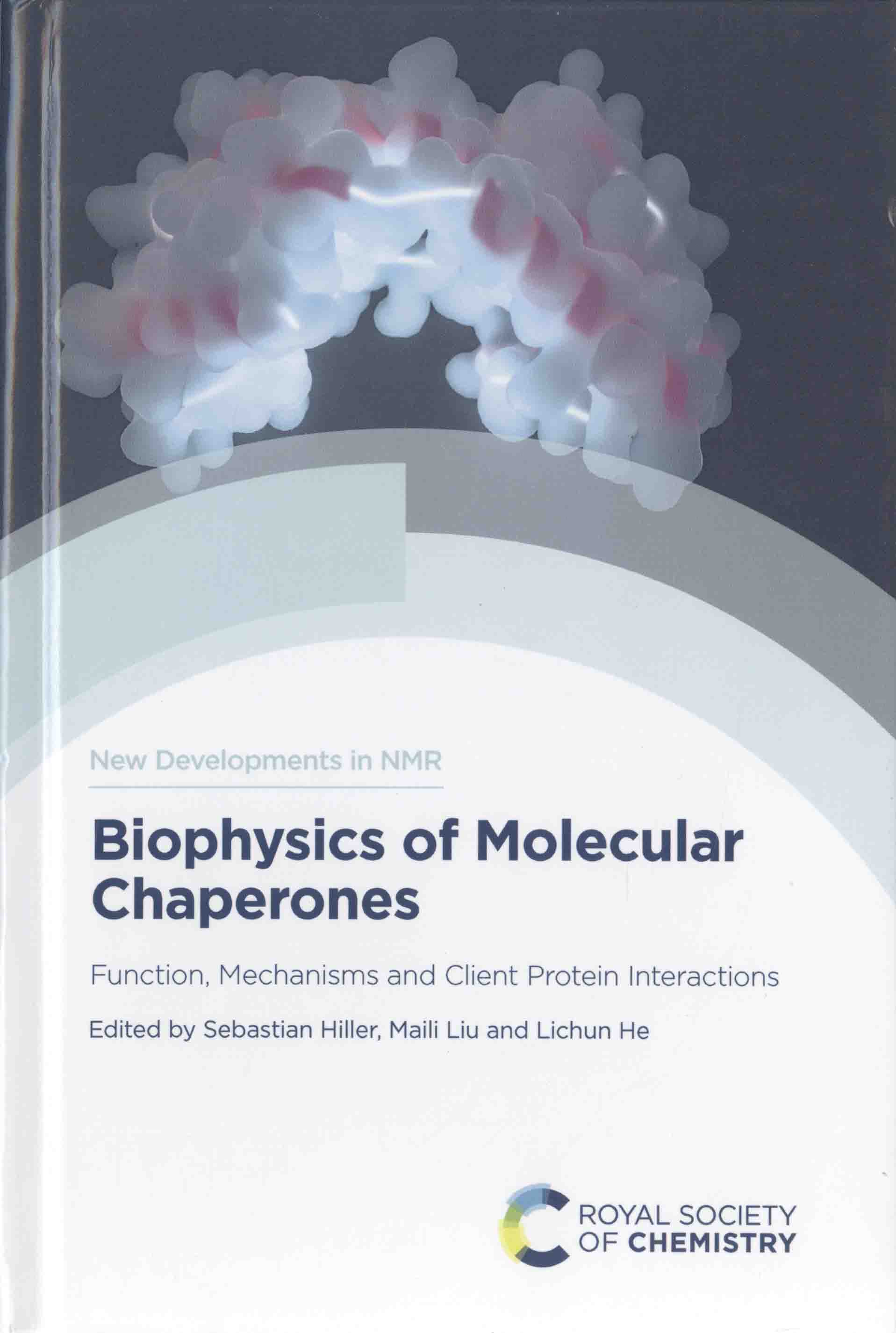 |
Biophysics of molecular chaperones : Function, mechanisms and cllient protein interactions / Edited by Sebastian Hiller, Maili Lin and Lichun He. -- Philadelphia, PA : Royal Society of Chemistry, [2024]. – (58.17421/B615) |
Contents
Chapter 1 Introduction: Molecular Chaperones and Protein Quality Control
1.1 Lifecycle of a Protein
1.2 Protein Aggregation
1.3 Major Molecular Chaperone Families
1.4 Protein Quality Control
1.5 Chaperone Dysfunction in Diseases
1.6 Outstanding Questions and Future Directions
Acknowledgements
References
Chapter 2 Structural Disorder in Chaperone Functions Probed by NMR
2.1 Introduction
2.2 NMR Methods for Studying Dynamic Protein Interactions
2.3 Structural Disorder in Chaperone Functions
2.4 Conclusions and Perspectives
References
Chapter 3 Solution NMR Approaches for Studying Molecular Chaperones
3.1 Introduction
3.2 Key Principles of Solution-based NMR Spectroscopy
3.3 NMR as a Tool for Structural Elucidation
3.4 Exchange-based NMR Experiments for Elucidating the Structures and Interactions and Detecting NMR-invisible States
3.5 Future Directions and Perspectives
Abbreviations
Acknowledgements
References
Chapter 4 Solution NMR Studies of Chaperone-Client Systems
4.1 Introduction
4.2 Solution NMR - A Powerful Tool for Chaperone-Client Systems
4.3 Isotope Labelling Strategies for Large Chaperone-Client Systems in Solution NMR
4.4 Advancement of NMR Techniques
4.5 NMR Applications in Chaperone-Client Systems
4.6 Conclusion and Outlook
Acknowledgements
References
Chapter 5 Preparing Chaperone-Client Protein Complexes for Biophysical and Structural Studies
5.1 Introduction
5.2 Client-Chaperone Complex Formation
5.3 Different Complex-formation Approaches in Practice
5.4 Concluding Remarks
Acknowledgements
References
Chapter 6 NMR Study of the Structure and Dynamics of Chaperone-Client Complexes
6.1 Introduction
6.2 Technical Developments in the Structural Study of Chaperone-Client Complexes
6.3 Structural Features of Chaperone-Client Complexes
6.4 Perspective/Conclusion
Acknowledgements
References
Chapter 7 Single Molecule Fluorescence Methods for Molecular Chaperones and Their Client Interactions
7.1 Introduction
7.2 Investigation of Chaperone Dynamics Across Timescales
7.3 Chaperone-Cochaperone-Client Interactions
7.4 Summary and Outlook
References
Chapter 8 visualization of Chaperone Mediated Protein Folding Using X-ray Crystallography
8.1 Introduction
8.2 Hsp70
8.3 Chaperonins
8.4 Trigger Factor
8.5 Spy
8.6 Conclusions
Acknowledgements
References
Chapter 9 Studying Molecular Chaperones and Their Client Interactions by Nanometer Distance Restraints from Electron Paramagnetic Resonance Spectroscopy
9.1 Introduction
9.2 Site-directed Spin-labeling
9.3 Distance Restraints from Continuous Wave and Pulsed EPR Spectroscopy
9.4 Molecular Chaperones Studied by EPR Spectroscopy
9.5 Outlook
Abbreviations
Acknowledgements
References
Chapter 10 EPR Studies of Chaperone Interactions and Dynamics
10.1 Introduction
10.2 Overview of Continuous-wave EPR: Theory and Experimental Considerations
10.3 SDSL-EPR Studies of Molecular Chaperones: Structure, Dynamics, and Interactions
10.4 Conclusions
Acknowledgements
References
Chapter 11 Probing Single Chaperone Substrates
11.1 Introduction
11.2 The Optical Tweezers Approach
11.3 Co-translational Folding
11.4 Post-translational Folding
11.5 Controlling Protein Aggregation
11.6 Outlook
References
Chapter 12 Integrative Methods to Investigate Chaperones in Regulating Protein Phase Separation and Aggregation
12.1 Emerging Roles of Chaperones in Protein Phase Separation and Aggregation
12.2 Methods to Investigate Chaperones Interacting with Client Proteins in Different States
Abbreviations
Acknowledgements
References
Chapter 13 Structural Biology in Cells by In-cell NMR
13.1 Introduction
13.2 Historical Aspects of In-cell NMR
13.3 In-cell NMR Methods Using Overexpression
13.4 Transexpression in Mammalian Cells
13.5 Transexpression Methods for In-cell NMR
13.6 Development of a Reporter System to Monitor Transexpression into Eukaryotic Cells
13.7 In-cell NMR Advantages and Limitations
13.8 Current In-cell NMR Investigations
13.9 An Overview of Previous and Future Chaperone Studies by In-cell NMR
13.10 Transient ~-Synuclein Chaperone Interactions in Cells by In-cell NMR
13.11 Outlook (Focus on In-cell NMR of Mammalian Systems)
References
Subject Index